Fix: ePSXe has Stopped Working
ePSXe is a PS2 simulator available for Windows and it’s often mentioned as one of the best emulators available for Windows. However, some users (mostly Windows 10 users) have reported that the program started to crash each time a game was run displaying the “ePSXe.exe has stopped working” error message afterward.
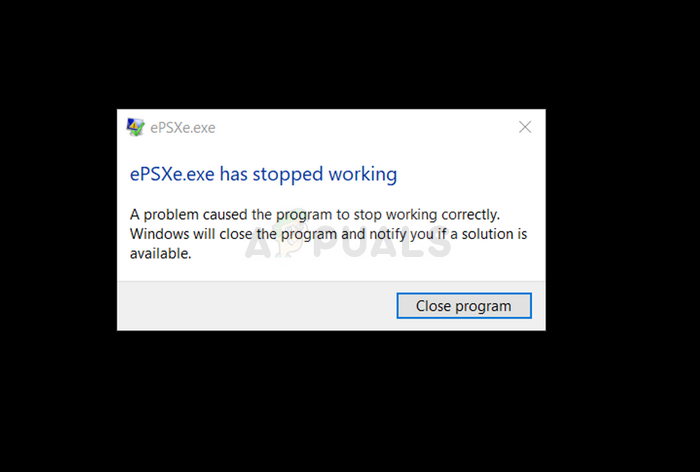
The problem wasn’t exactly resolved by later patches to the program and it’s still available in the latest version. There have been some fairly successful methods mentioned by users which have worked for them in their scenario. Try them out below and check out if this resolved your problem.
What Causes ePSXe to Stop Working?
ePSXe is crashing for several reasons which sometimes include quite basic fixes and sometimes include some more advanced troubleshooting. Check out the full list below:
- The CPU overclock option is set to more than x1 for users who haven’t overclocked their CPUs. It’s weird that the program would automatically set this option to something other than x1 but it causes ePSXe to crash and it should be changed.
- Graphics drivers are also a common cause of the problem which was to be expected. Sometimes the problem is caused by outdated drivers but more often it’s the case of the newly installed driver which don’t fully support the program.
- Since the problem occurs almost exclusively to Windows 10 users, you should try running it in compatibility mode for Windows 7.
- It’s quite possible that the problem required administrator permissions in order to run properly so make sure you grant them.
Solution 1: Setting CPU Overclock to x1
This is probably the best-known method for resolving this problem and it’s suggested in numerous forum posts and videos across the Internet. It can be used to easily resolve the problem triggered when the CPU overclocking option available from the in-app menu is set to a value larger than x1.
It’s not known just why this is set up as default and many users had their fair share of problems when troubleshooting this problem but the method is well-known know so make sure you try it out.
- Locate the ePSXe main executable and double-click it in order to run it. Alternatively, you can search for it in the Start menu.
- After the emulator window opens, click the Options button in the menu bar and navigate your mouse towards the CPU overclocking entry.
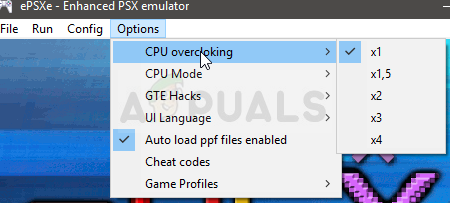
- Make sure you check the x1 option by clicking on it. Check to see if the problem still appears!
Solution 2: Install the Latest Driver or Roll Back the most Recent one
Since Windows 10 sometimes automatically updates some of your drivers when a new version of the OS is installed, users have reported that the newest graphics card driver was the culprit to blame and they suggested that restoring an earlier version actually helped them troubleshoot. Also, if the drivers haven’t been updated recently, it’s good to look for an update!
- Click the Start menu button, type in “Device Manager” afterward, and select it from the list of available results by simply clicking the first one. You can also tap the Windows Key + R key combo in order to bring up the Run dialog box. Type in “devmgmt.msc” in the dialog box and click OK in order to run it.
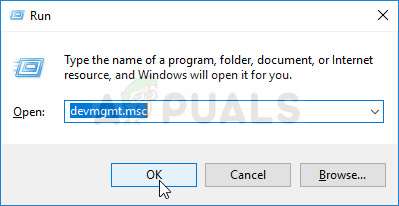
- Since it’s the video card driver you want to update on your computer, expand the Display adapters section, right click on your graphics card and choose the Uninstall Device
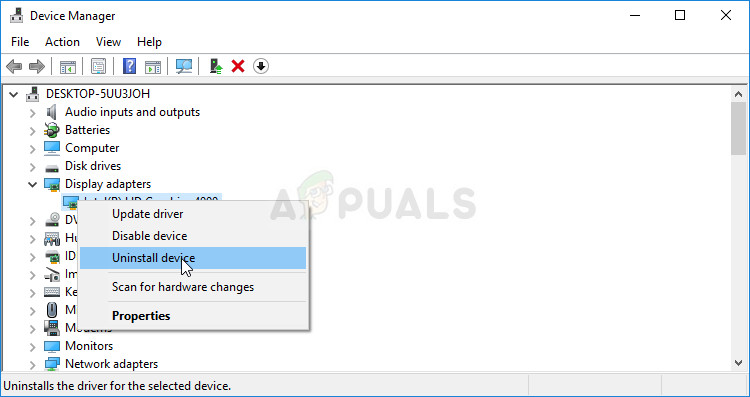
- Confirm any dialogues or prompts which may ask you to confirm the uninstallation of the current graphics device driver and wait for the process to complete.
- Look for your graphics card driver on NVIDIA’s or AMD’s Input the required information about the card and your operating system and click on Search.

- A list of all available drivers should appear. Make sure you scroll down until you reach the required entry, click on its name and the Download button afterward. Save it to your computer, open it, and follow the instructions on-screen in order to install it. Check to see if ePSXe keeps crashing!
Alternative: Rollback the Driver
For those who feel uncomfortable looking for the drivers themselves as it can be confusing for casual users since you need to input info about your computer and search through many different drivers and install them manually, there is an alternative. It involved rolling back the graphics card driver.
This process will look for backup files of the driver which was installed before the most recent updates and that driver will be installed instead. This option is not always available but this will definitely be easier as it works both for NVIDIA or AMD users:
- First of all, you will need to uninstall the driver you currently have installed on your machine.
- Type “Device Manager” into the search field next to the Start menu button to open the device manager window. You can also use the Windows Key + R key combination in order to open the Run dialog box. Type devmgmt.msc in the box and click OK or Enter key.

- Expand the “Display Adapters” section. This will display all network adapters that the machine has installed at the moment.
- Right click on the display adapter you want to rollback and select Properties. After the Properties window opens, navigate to the Driver tab and locate the Roll Back Driver
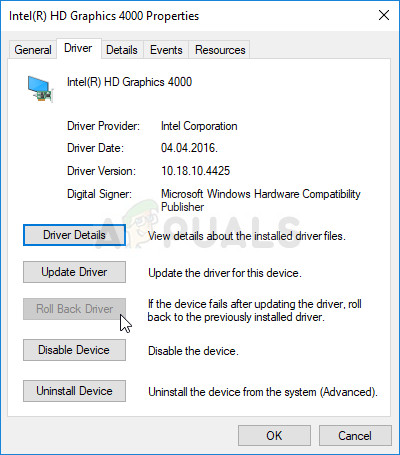
- If the option is grayed out, it means that the device wasn’t updated recently or it has no backup files remembering the old driver.
- If the option is available to click on, do so and follow the instructions on-screen to proceed with the process. Restart the computer and check to see if the problem still occurs ePSXe!
Solution 3: Runing as Administrator and in Compatibility Mode
Finally, you may simply try to force it to run with administrator permissions as it worked out for some people. Also, since Windows 7 doesn’t usually complain about this problem at all, you should try and check whether running the executable in compatibility mode for Windows 7 resolved the problem!
- Locate the ePSXe.exe file and change its properties by right-clicking its entry either on the Desktop, the Start menu or the Search results window and choose Properties. Navigate to the Compatibility tab in the Properties window and check the box next to the Run this program as an administrator.
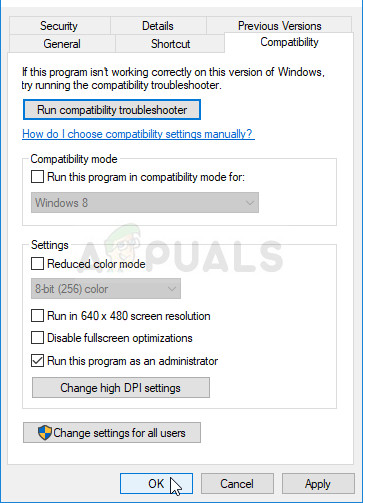
- Under the Compatibility mode section, check the box next to the Run this program in compatibility mode for option and choose Windows 7 from the drop-down list before accepting the changes.
- Make sure you confirm any dialogs which may appear for you to confirm with admin privileges and ePSXe should launch with admin privileges from now on. Open it by double-clicking its icon and try to see if the error still appears.





